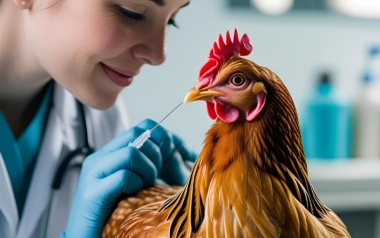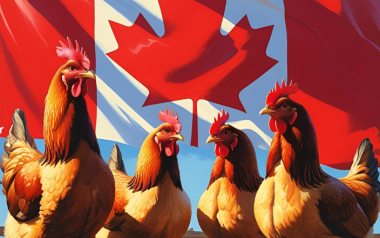Scientists have shown that, even in birds, fever is not the only response to change body temperature against infections by viruses and bacteria, but that regulated hypothermia can save the body’s energy during severe infectious conditions.
12 Aug 2021
Regulated hypothermia can help broilers tolerate infection
The regulated hypothermia, a phenomenon described in mice to tolerate severe inflammations and infections, has just been demonstrated for the first time in broilers.
Available in other languages:
Content available at:
Português (Portuguese (Brazil))
The regulated hypothermia, a phenomenon described in mice to tolerate severe inflammations and infections, has just been demonstrated for the first time in broilers. The result of the study, supported by FAPESP, and signed by researchers from Unesp (Universidade Estadual Paulista) and from USP (Universidade de São Paulo) as illustrated by the Journal of Physiology cover.

“It has been known for a long time that fever is a way for the body to fight aggressive agents, but heating the body requires a lot of energy, which can mean a high cost for the system. What has been shown in recent years, including in people hospitalized in intensive care units, is that the body often cools down during serious infections, saving energy and saving itself in the face of this severe situation ”, says Kênia Cardoso Bícego, professor at FCAV (Faculty of Agrarian and Veterinary Sciences) at Unesp, in Jaboticabal, and coordinator of the study.
The work is part of a project coordinated by Bícego supported by FAPESP. It is also part of Lara do Amaral Silva’s doctorate completed at FCAV-Unesp.
Until studies carried out with mammals by other research groups showed otherwise, the view on hypothermia during severe infections was different. It was believed that the drop in temperature was due to a lack of oxygen (hypoxia), inferred by the drop in metabolic rate observed in the experiments, which in turn would be caused by a system collapse.
“These studies demonstrated that a drop in temperature actually reduces energy expenditure and, therefore, the body needs less oxygen. In addition to conserving energy, damage to tissues such as the lungs and liver is reduced. Therefore, this is a beneficial response induced by the organism itself”, explains Bícego.
One of the study’s co-authors, Alexandre Steiner, a
TO CONTINUE READING REGISTER IT IS COMPLETELY FREE
Access to articles in PDF
Keep up to date with our newsletters
Receive the magazine for free in digital version
REGISTRATION
ACCESS
YOUR ACCOUNT
LOGIN
Lost your password?





































